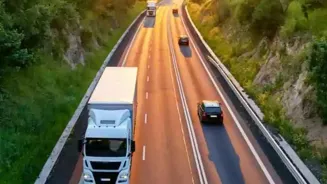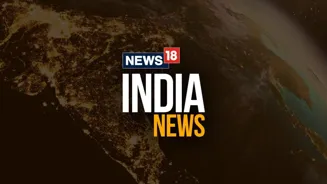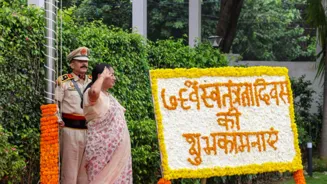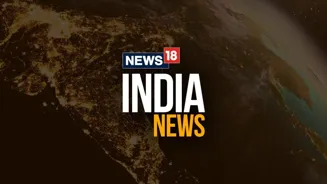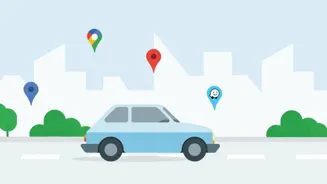New Delhi, Aug 14 (PTI) Speeding by heavy and commercial vehicles remains a major road safety concern in the national capital, even as overall road traffic fatalities have declined by 10 per cent since
2015, according to the Status Summary Report 2025 released under the Bloomberg Philanthropies Initiative for Global Road Safety (BIGRS).
The report was released on Thursday by Delhi Chief Minister Rekha Gupta, along with Transport minister Pankaj Singh and senior government and traffic police officers.
Prepared by the Johns Hopkins International Injury Research Unit in collaboration with the CSIR-Central Road Research Institute, the report analysed roadside observations between November 2021 and April 2025.
The report highlights results from an ongoing study that captured observations of speed as a risk factor.
The findings show that speeding prevalence in Delhi increased from 27 per cent in December 2021 to 35 per cent in April 2025, with heavy vehicles clocking the highest rates at 49 per cent.
Commercial vehicles, including buses, rickshaws and vans, consistently showed the highest speeding prevalence at 42 per cent citywide as against 28 per cent in private vehicles. Speeding was highest among heavy vehicles (49 per cent) compared with light vehicles (33 per cent) and motorcycles (31 per cent).
Even when it came to blackspots, commercial vehicles had the highest prevalence of speeding at 50 per cent compared with private vehicles at 31 per cent.
A crash blackspot (also known as a crash hotspot) is a section of road where the incidence of several road crash types or a particular road crash type is comparatively higher than on other similar sections of the road.
Blackspots saw mean vehicle speeds of 58 km/hour, compared to 43 km/hour among those within limits.
Speeding was slightly more prevalent on weekends (48 per cent) compared with weekdays (45 per cent) at the crash hotspots. Speeding was highest during late night/early morning hours at blackspots last year in April.
According to the report, motorcyclists were identified as a particularly vulnerable group, accounting for 38 per cent of all road traffic deaths in 2023.
The report noted that motorcycles were more likely to speed on arterial roads (33 per cent) than on expressways (18 per cent) or local and collector roads (28 per cent). Late-night speeding was especially common, with 47 per cent of motorcycles exceeding limits after dark compared to 33 per cent during the day.
Overall, vulnerable road users — motorcyclists, pedestrians and cyclists — made up 83 per cent of fatalities in 2023. Pedestrians alone accounted for 43 per cent of deaths, while vehicle occupants comprised just three per cent.
The report warned that even a 1 km/h increase in average vehicle speed can raise the incidence of injury crashes by three per cent and fatal crashes by 4–5 per cent. It calls for intensified enforcement measures, stricter inspections for commercial vehicles, and targeted public awareness campaigns.
The key recommendations for the Delhi Traffic Police include expanding electronic and roadside enforcement, reforming the e-Challan system for prompt fine issuance, and focusing on heavy and commercial vehicle speeding, especially at blackspots and during weekends or late nights.
The Transport Department has been urged to push for mandatory antilock braking systems on all motorcycles, retrofit older models, and enforce compliance among commercial fleets.
Road-building agencies such as the PWD, MCD, NDMC, DDA, and NHAI have been advised to conduct regular safety audits and install speed-calming infrastructure, including humps, rumble strips, raised pedestrian crossings, and clear signage at high-risk sites.
“High speeds lead to a greater risk of a crash and a higher probability of serious injury,” the report emphasised, noting that addressing the issue requires coordinated enforcement, engineering, and education measures.
Since 2021, the Johns Hopkins International Injury Research Unit, through the Bloomberg Philanthropies Initiative for Global Road Safety (BIGRS), has been conducting observations in Delhi to reduce road injuries and fatalities. PTI SLB SLB AMJ
AMJ
